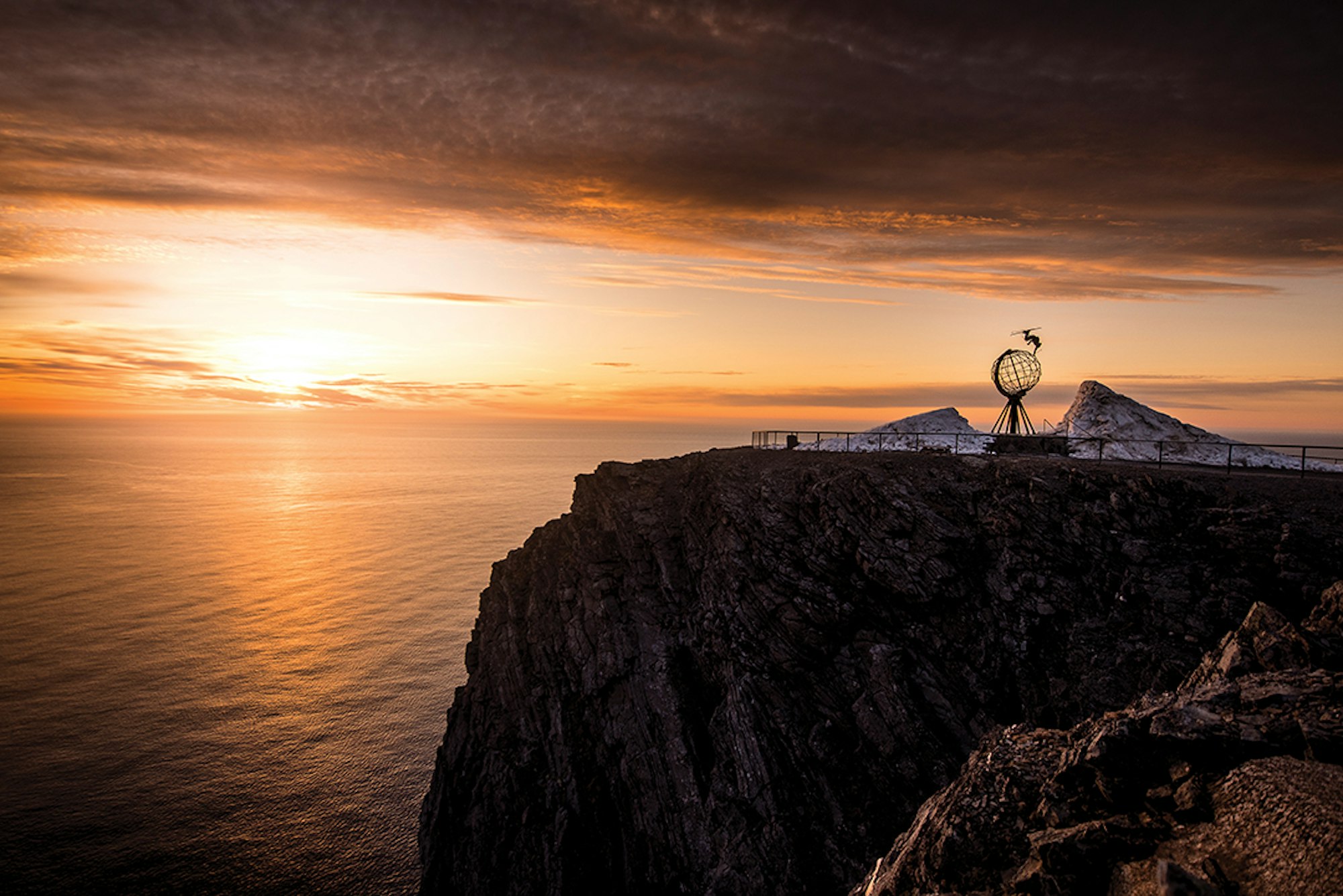As the northernmost point of Norway and continental Europe, the North Cape (Nordkapp, in Norwegian) has been the destination of many a journey, dating back to 1553, when Englishman Steven Borough, captain of the Edward Bonaventure, sailed past in search of the Northwest Passage. More recently, adventurers, royalty and expeditions have set the North Cape’s mountain plateau and the sculpture that sits upon it as their goal.
But only one individual aspired to complete a “hand-drag 540” when he got there… The feat was done while filming for Field Productions‘ latest film, Supervention 2. Watch the full film, here, and read about the filming process from the skier himself, below.
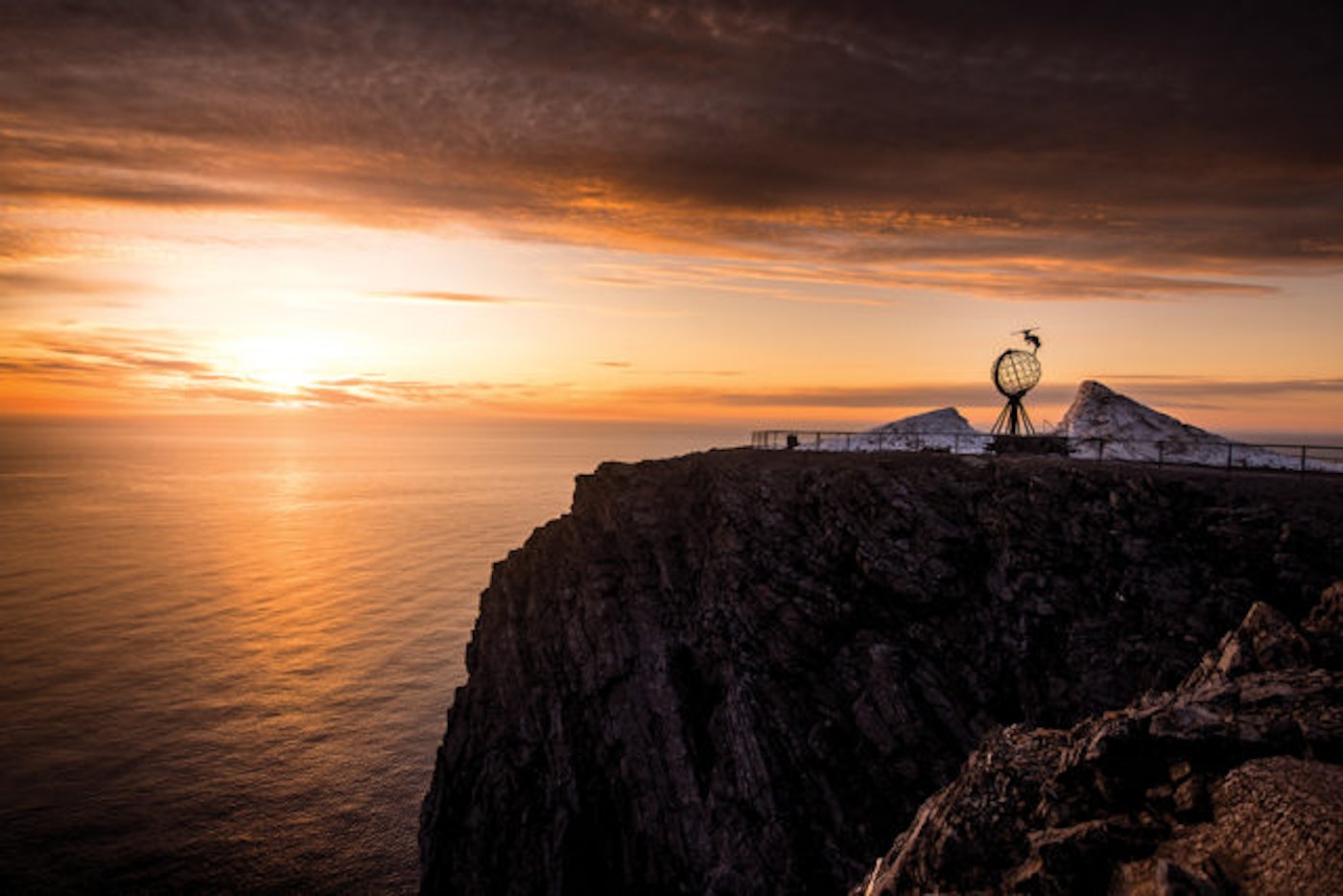
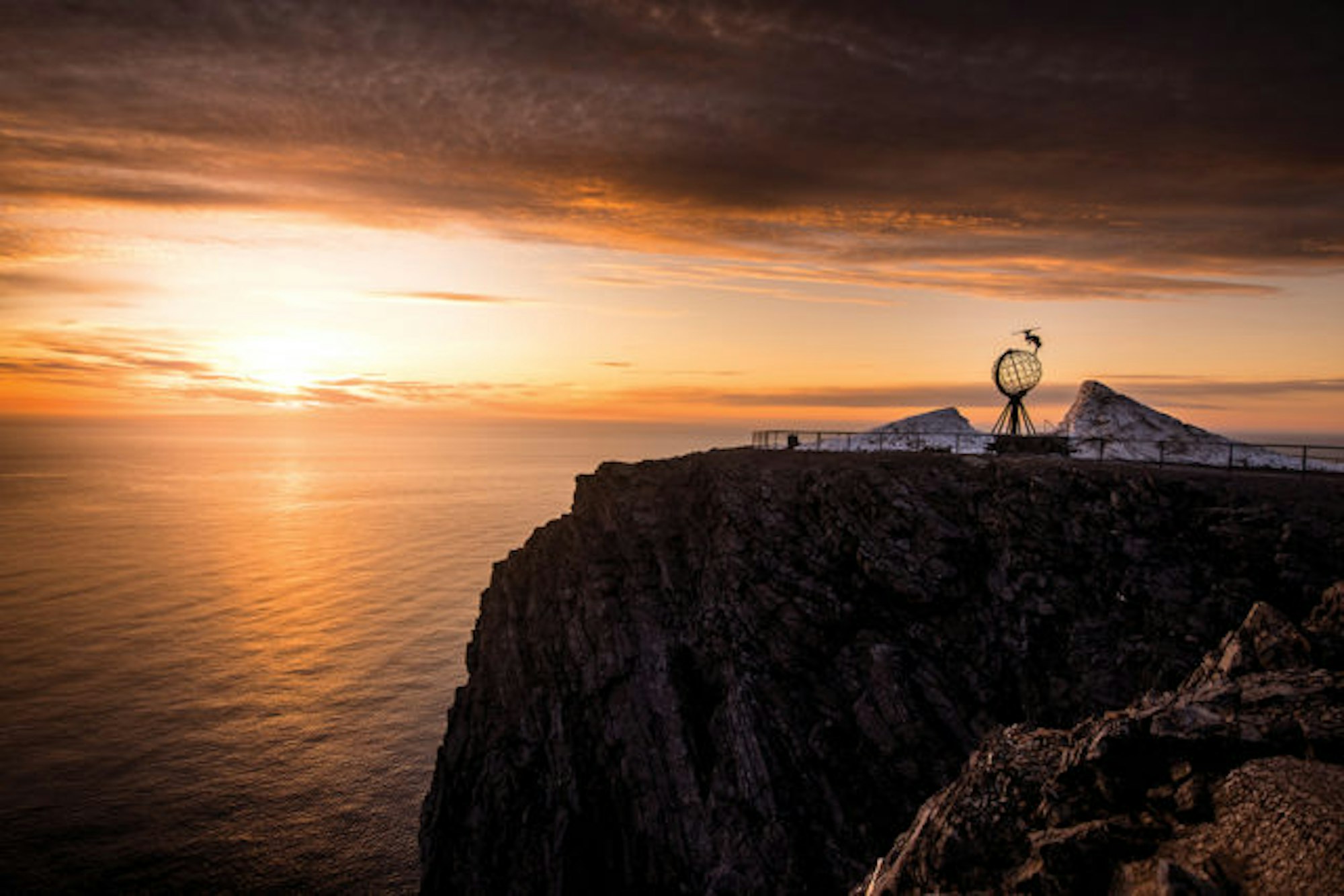
Recounted by skier Anders Backe
This was a project I worked on for almost two years. I was looking for new and unique spots and destinations to ski and Nordkapp came up. There, at the northernmost point of Norway and continental Europe, was an iron globe, situated atop a 1,000-plus-foot-tall cliff above the sea.
I connected with the right people and presented the project over the phone and by email. The hard part about pulling off this shoot, I’d come to find, was that there was very little snow to work with; this place doesn’t see much snow to begin with and when there is snow, lots of wind tends to blow it away.
After a few more phone calls and emails I got loose permission to do this project if conditions allowed.
On April 22, 2016, I checked Nordkapp’s weather predictions—for the hundredth time—and saw three days of sunshine on the extended forecast. Granted, this is a place that can get three seasons’ worth of weather in a day, but it looked like my only chance, so photographer Vegard Breie and I booked tickets to fly up a few days later.
From Alta Airport, we drove three hours north up to Nordkapp to check out the globe and to see if it was actually possible to jump over it. I’d only seen the structure on TV shows and in photographs and I was surprised by how tall it was—around 25 to 30 feet. The in-run was an uphill slope and the landing zone was only about 25 feet long, ending in a fence with a 1,000-foot-high cliff on the other side.
There was no snow around the globe but we found some nearby. With a great deal of work and some luck, I figured it would be possible, so I phoned the Field crew.
The luck we needed came in the form of a wheel loader, loaned to us by a man named Mykola—the manager of a local museum. Now, I hadn’t driven a wheel loader before, but I grew up on a farm and I’d been around excavators and tractors since I was a kid, so I was hopeful I could make it work. Next thing I know, I’m driving a wheel loader back and forth between the iron globe and the stockpile of snow down the street, moving huge loads all at once while hundreds of tourists were standing in the wind taking selfies next to the structure.
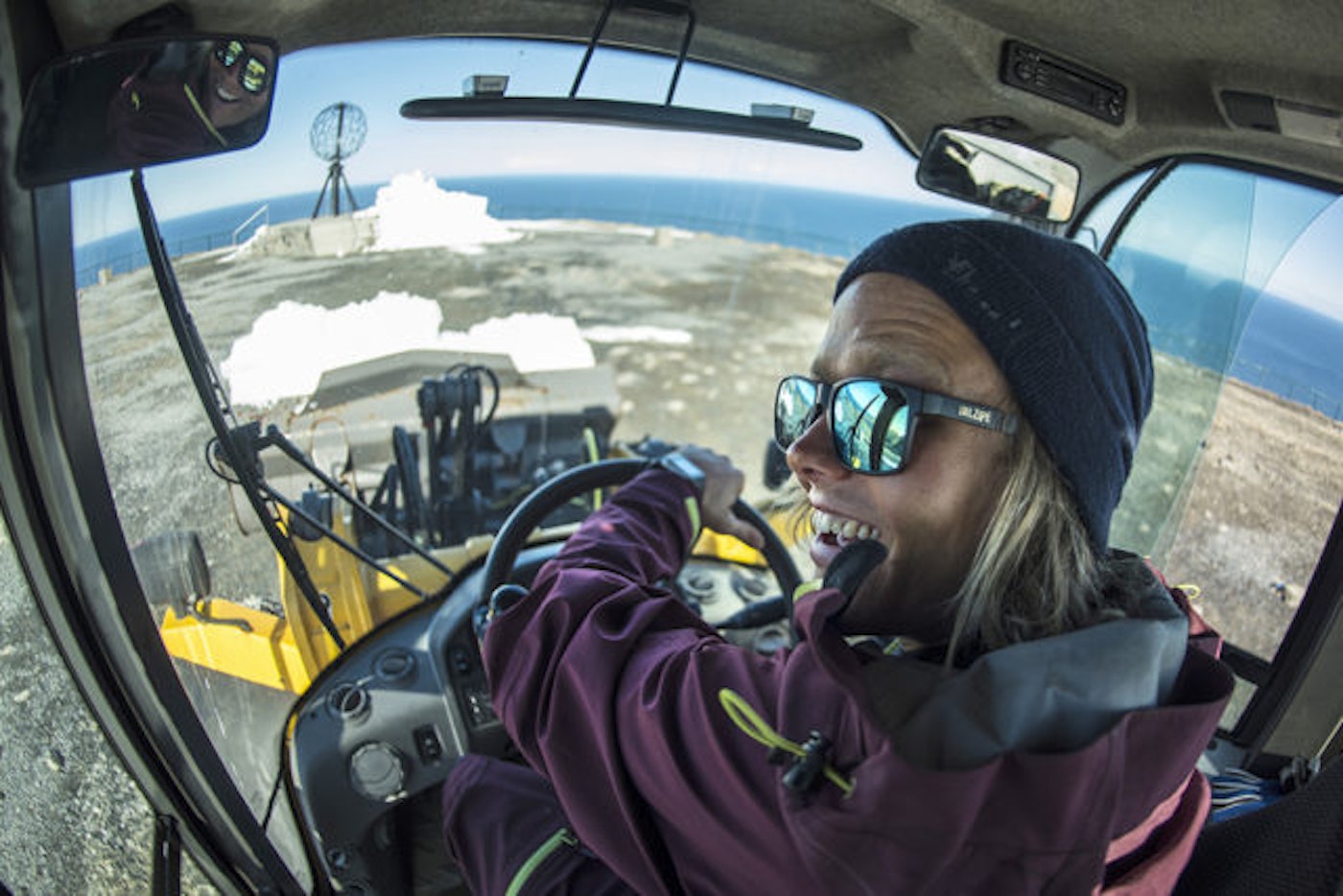
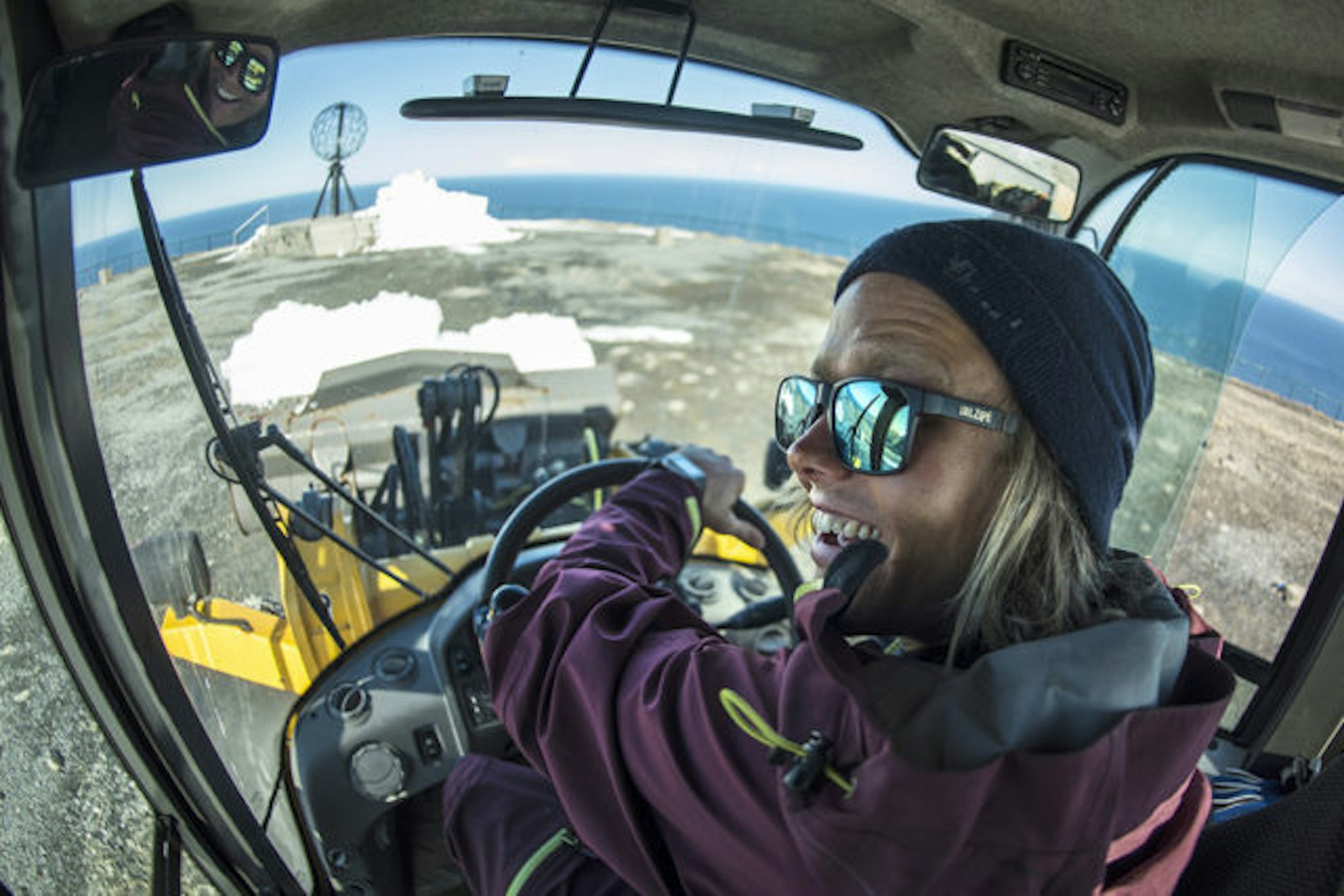
On a Tuesday afternoon, Mykola arrived and told me that we had to halt our activity because of licensing troubles with the wheel loader. What? And the jump was far from finished. So, I got the number of the chief at Veidekke [one of Norway’s largest construction companies], called him, and amazingly he sent a guy all the way from Honningsvåg, 20-plus miles away, with a wheel loader to help out. By Wednesday night we were pretty much done with the build and just had a little fine-tuning left for Thursday. The Field crew arrived Wednesday night.
On Thursday, the warm wind had melted the snow along the in-run and the jump was in dire straits. I called Veidekke again and they sent a new guy and a new machine to help us out. We spent eight hours rebuilding the in-run, jump and landing. All the while, cameras and drones were getting prepped. I was very eager at that point to test it out.
In order to work around the uphill in-run, I’d gotten in touch with a guy who operates ATV and snowmobile tours around Nordkapp. He showed up with his racing ATV, 300 feet of rope and some shackles.
We thought towing into the jump at 40 miles per hour would be a good starting point. However, going into the almost 20-foot-tall jump against heavy winds, holding onto a rope and going uphill made it difficult to figure out the right speed. But, after planning a project like this for almost two years, working for four days straight building a jump and finally getting one hour of light to work with, I wasn’t about to fail.
Go too slow and I’d hit the iron globe and fall almost thirty feet to concrete. Go too far and it was just that four-foot-high fence standing between me and a nasty cliff dive.
On my first hit, I landed just about 10 feet in front of the fence. Scary. Then, the session ramped up. I did a few 360s over the globe at first and had three attempts at a hand-drag 540. I nailed that trick just before the sun set, and just before we stopped flying the drones for the evening.
Note: This article appears in FREESKIER Magazine Volume 19.4, the Top 10 Issue. Subscribe to FREESKIER Magazine, here.

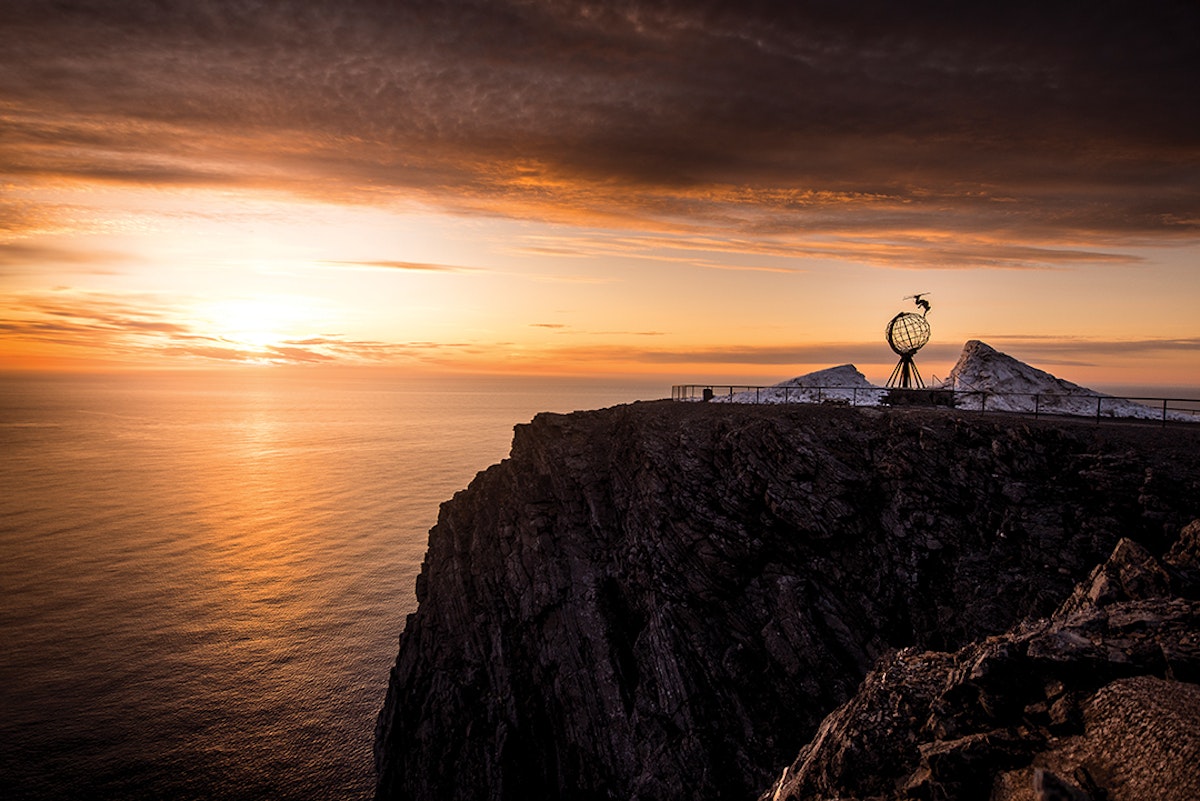
![[GIVEAWAY] Win a Head-to-Toe Ski Setup from IFSA](https://www.datocms-assets.com/163516/1765920344-ifsa.jpg?w=200&h=200&fit=crop)
![[GIVEAWAY] Win a Legendary Ski Trip with Icelantic's Road to the Rocks](https://www.datocms-assets.com/163516/1765233064-r2r26_freeskier_leaderboard1.jpg?w=200&h=200&fit=crop)

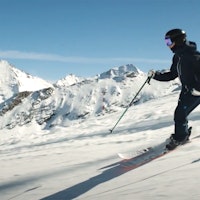
![[GIVEAWAY] Win a Legendary Ski Trip with Icelantic's Road to the Rocks](https://www.datocms-assets.com/163516/1765233064-r2r26_freeskier_leaderboard1.jpg?auto=format&w=400&h=300&fit=crop&crop=faces,entropy)




![[GIVEAWAY] Win a Head-to-Toe Ski Setup from IFSA](https://www.datocms-assets.com/163516/1765920344-ifsa.jpg?auto=format&w=400&h=300&fit=crop&crop=faces,entropy)


